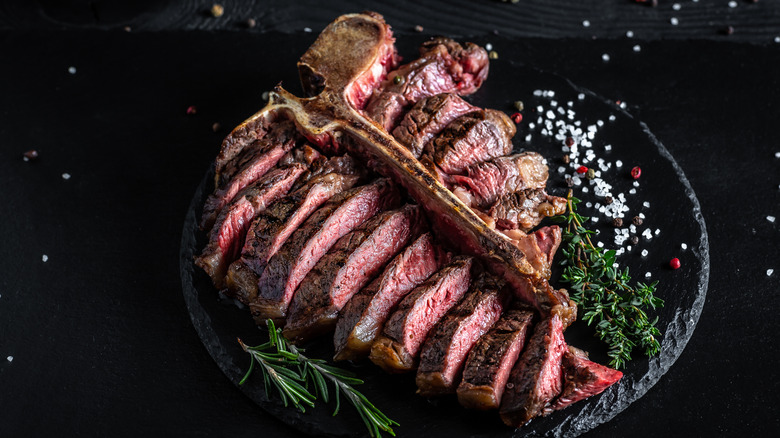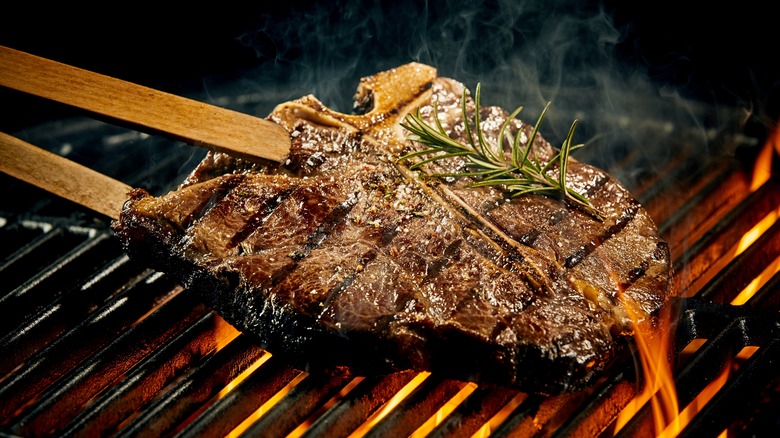The Simple Trick To Never Overcook A T-Bone Steak Again
Cooking a T-bone steak should be considered something equivalent to mental gymnastics. With a T-bone, you are cooking two different steaks simultaneously. The iconically shaped steak is a one-half tenderloin (filet mignon) and one-half strip steak (NY strip) held together by massive central bones shaped like the letter T. Separated, these two steaks cook completely differently from one another. However, when they're connected, they still cook completely differently from one another. Because of this, the risk of overcooking a T-bone is high.
There are certain cooking methods that do not lend themselves well to T-bone steaks. Pan searing over high heat often leads to uneven cooking because the steak is sometimes too large to fit in the pan, and the central bone doesn't shrink along as the meat cooks. The lack of surface area in contact with the heat leads to uneven browning, which prevents fats and juices from developing, giving you an overdone, dry steak.
Grilling is a far better option for a T-bone. The steak is easier to move around on the grill, thereby allowing you better control to regulate which part of the steak cooks on and off of direct heat. A great trick is to face the smaller, less fatty tenderloin side of the steak away from direct heat and cook it to where it is 5 degrees cooler than the strip side.
Use indirect heat to cook the perfect T-bone steak
The best way to go about grilling a T-bone steak is to do the primary cook over indirect heat, then finish over direct heat. This is a method known as reverse searing. This method will cook the T-bone more evenly, and provide a nicer crust on the steak. As the steak is already mostly cooked by the time you sear it, there is less moisture for the grill to contend with, thereby giving you that sought-after crust.
You can set up direct and indirect heat zones with any type of heat source, whether it's propane, charcoal, or wood. Set the T-bone so that the larger strip side is facing the heat source and running parallel to the flame. The tenderloin side faces away from the heat. Because of its lower fat content and smaller size, the tenderloin cooks faster than the strip and therefore requires less heat.
Be sure to monitor the steak's internal temperature with a meat thermometer. When the strip side hits 115 degrees Fahrenheit, and the tenderloin reads 5 degrees lower at 110, the steak is done. Though it seems strange, this 5-degree temperature disparity is actually a sign the two steaks are cooked evenly. Finish by searing off the steak and letting it rest for a few minutes. Then cut in and see the beautiful, ruby-red perfection of a beautifully cooked T-bone steak.

